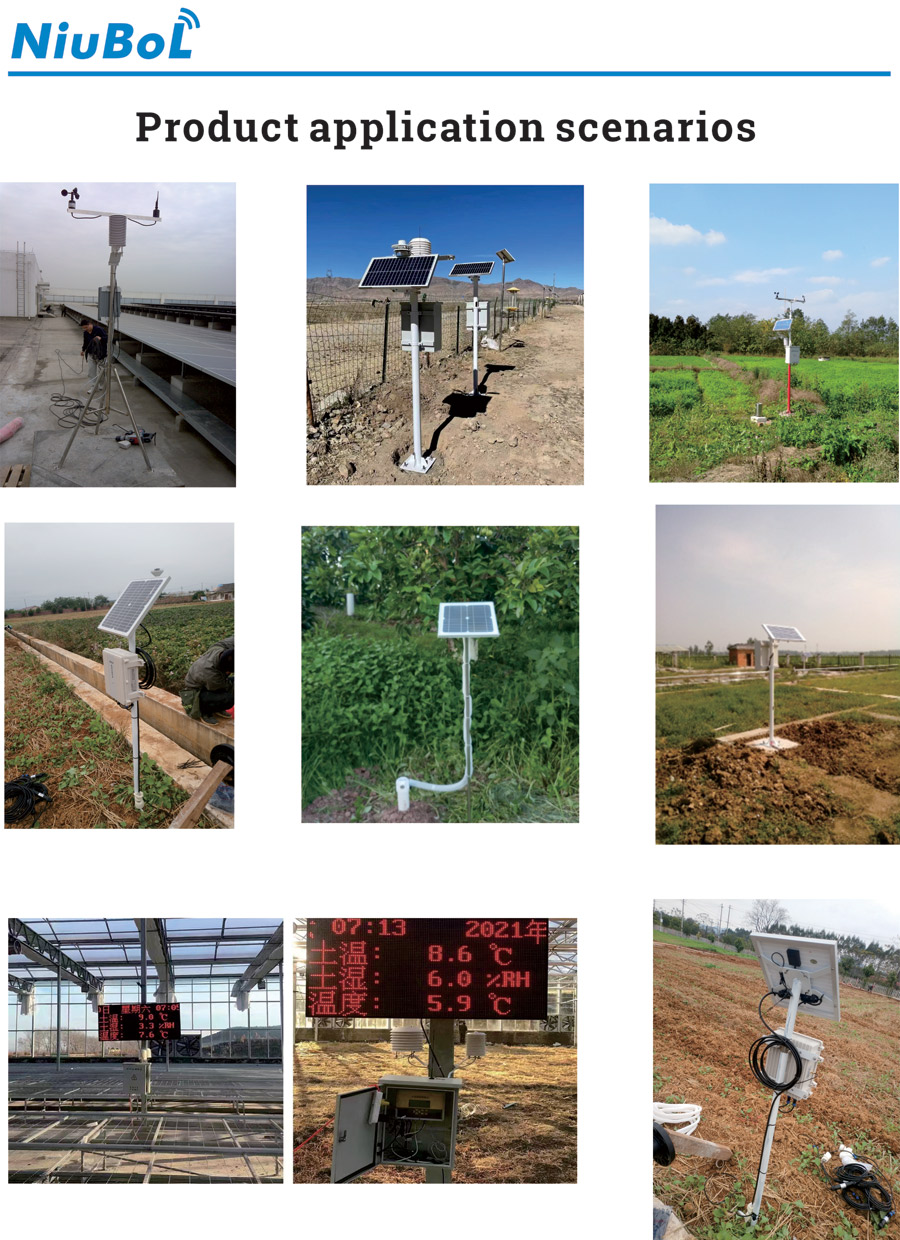

— Blogs —
—Products—
 Consumer hotline +8618073152920
Consumer hotline +8618073152920 WhatsApp:+8615367865107
Address:Room 102, District D, Houhu Industrial Park, Yuelu District, Changsha City, Hunan Province, China
Product knowledge
Time:2024-05-18 16:14:15 Popularity:416
In order to realize the effective monitoring of environmental conditions in greenhouse greenhouses and ensure the best conditions for plant growth, the following types of sensors are usually required:
1. Temperature sensors: used to monitor the temperature inside the greenhouse. Temperature is an important factor affecting the growth of plants, too high or too low a temperature will affect the normal growth of plants. Common temperature sensors include thermocouples, platinum resistors and thermistors.
2. Humidity Sensor: Used to measure the humidity of the air in the greenhouse. Humidity is critical for water uptake and transpiration in plants. Too high or too low humidity may adversely affect plant growth.
3. Light sensor: Used to monitor the light intensity in the greenhouse. Light is a key factor for photosynthesis, and different plants have different needs for light, so light sensors are needed to adjust the light conditions in the greenhouse to ensure that plants can get the right light.
4. CO2 Sensor: It is used to detect the carbon dioxide concentration in the greenhouse. Plants consume CO2 while photosynthesizing, and the concentration of CO2 directly affects the efficiency of photosynthesis, so CO2 sensors can be used to ensure that the CO2 concentration in the greenhouse is suitable for plant growth.
The data from these sensors are usually collected and transmitted through IoT technology, and analyzed through intelligent management systems in order to automatically adjust the environmental conditions in the greenhouse, such as ventilation, heating, cooling, irrigation, and shading, thus realizing intelligent control of the environment in the greenhouse.
Greenhouse greenhouse temperature, humidity and light monitoring is extremely important in modern agricultural production, mainly reflected in the following aspects:
1. Improve crop yield and quality:
Temperature and humidity are important factors that affect crop growth. Too high or too low temperature and humidity may lead to crop growth obstruction or even death. By monitoring and regulating the temperature and humidity in the greenhouse in real time, it can provide the best growing environment for crops, thus improving crop yield and quality.
Light has a direct impact on the photosynthesis of crops. Appropriate light intensity and time can promote crop photosynthesis, accumulate nutrients, and increase yield. Light monitoring can help farmers understand the crop's need for light, and reasonably adjust light conditions to ensure healthy crop growth.
2. Energy saving and emission reduction:
Through real-time monitoring of temperature and humidity in the greenhouse greenhouse, the environment in the greenhouse can be precisely controlled to reduce unnecessary energy waste. For example, when the temperature is appropriate, the running time of heating or cooling equipment can be reduced, reducing energy consumption.
Light monitoring can guide farmers to reasonably utilize natural light resources, reduce the running time of artificial light replenishment equipment, and further reduce energy consumption.
3. Precision agriculture management:
Temperature, humidity and light monitoring data can provide strong support for precision agriculture management. Through data analysis, farmers can understand the environmental needs of crops in different growth stages, and develop more scientific and reasonable planting plans and management strategies.
At the same time, these data can also help farmers predict crop growth trends and yields, providing a basis for decision-making in agricultural production.
4. Disaster warning and response:
Temperature, humidity and light monitoring can discover the trend of the environment in the greenhouse greenhouse in a timely manner and provide early warning of possible disasters. For example, when the humidity in the greenhouse is too high, it may lead to the breeding of diseases; when the light is insufficient, it may affect the normal growth of crops. Through monitoring data, farmers can take timely countermeasures to reduce the impact of disasters on agricultural production.
5. Scientific research and experiment:
Temperature, humidity and light monitoring data can provide rich experimental materials for agricultural scientific research. Through the analysis of these data, researchers can gain an in-depth understanding of the relationship between crop growth and environmental factors, providing theoretical support for agricultural production and scientific and technological innovation.

In summary, greenhouse temperature, humidity and light monitoring is of great significance for improving crop yield and quality, energy saving and emission reduction, precision agriculture management, disaster warning and response, as well as scientific research and experimentation. With the continuous development of modern agricultural technology, greenhouse temperature, humidity and light monitoring will play a more important role in agricultural production.
Related recommendations
Sensors & Weather Stations Catalog
Agriculture Sensors and Weather Stations Catalog-NiuBoL.pdf
Weather Stations Catalog-NiuBoL.pdf
Related products
 Combined air temperature and relative humidity sensor
Combined air temperature and relative humidity sensor Soil Moisture Temperature sensor for irrigation
Soil Moisture Temperature sensor for irrigation Soil pH sensor RS485 soil Testing instrument soil ph meter for agriculture
Soil pH sensor RS485 soil Testing instrument soil ph meter for agriculture Wind Speed sensor Output Modbus/RS485/Analog/0-5V/4-20mA
Wind Speed sensor Output Modbus/RS485/Analog/0-5V/4-20mA Tipping bucket rain gauge for weather monitoring auto rainfall sensor RS485/Outdoor/stainless steel
Tipping bucket rain gauge for weather monitoring auto rainfall sensor RS485/Outdoor/stainless steel Pyranometer Solar Radiation Sensor 4-20mA/RS485
Pyranometer Solar Radiation Sensor 4-20mA/RS485
Screenshot, WhatsApp to identify the QR code
WhatsApp number:+8615367865107
(Click on WhatsApp to copy and add friends)